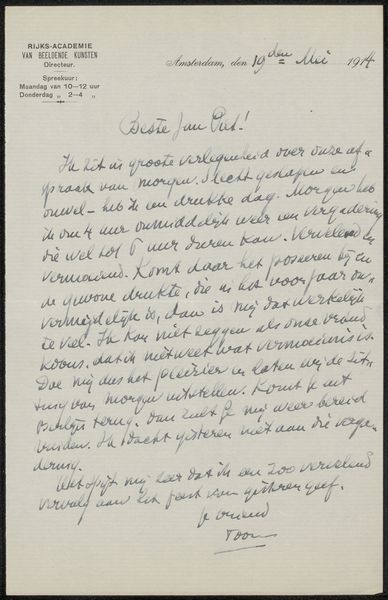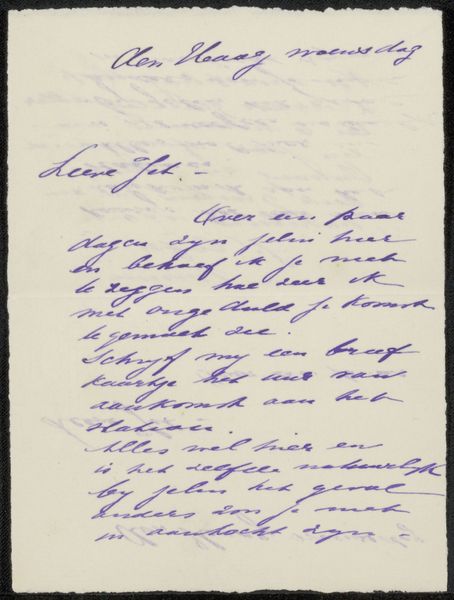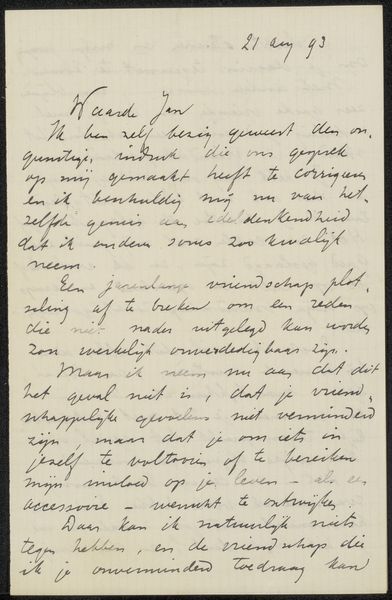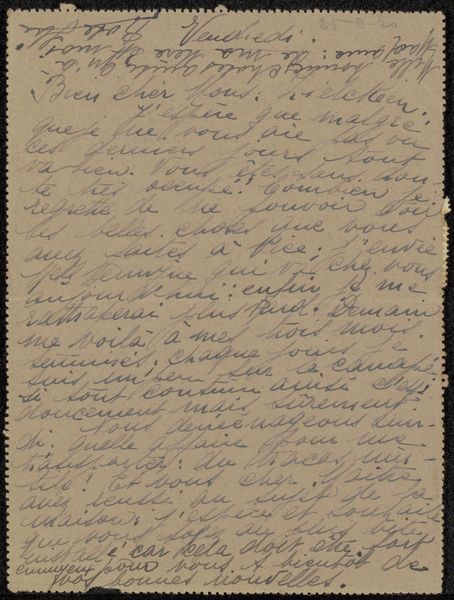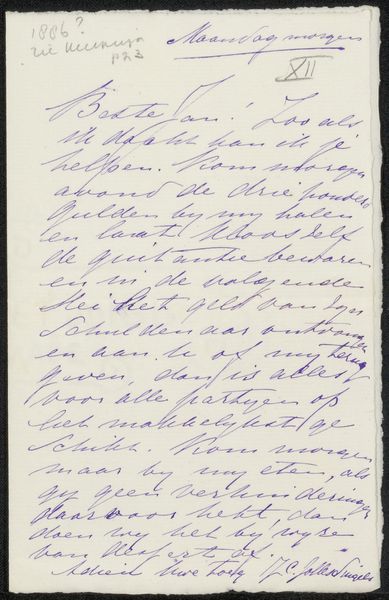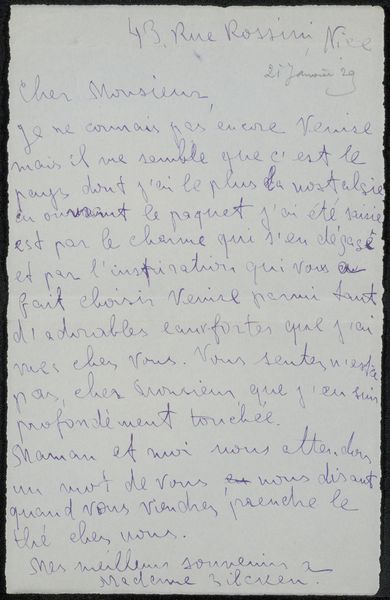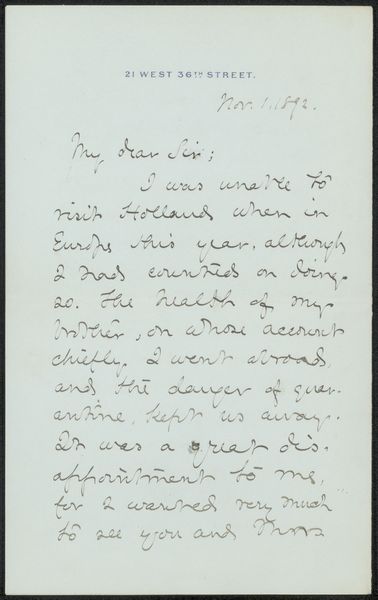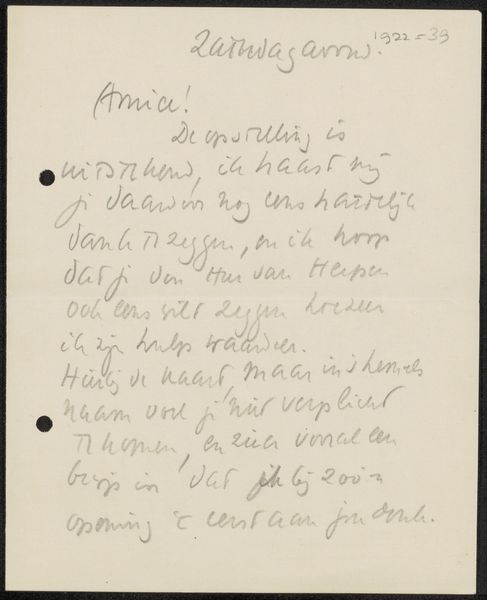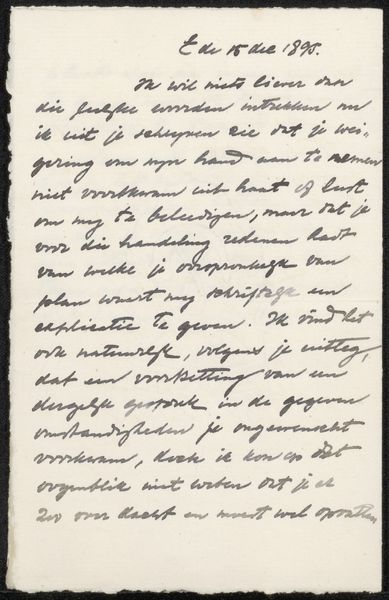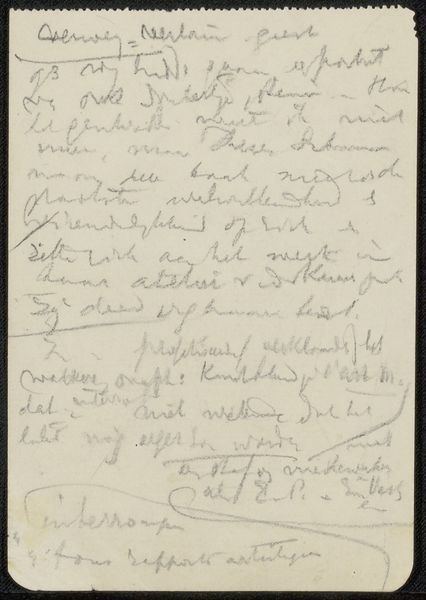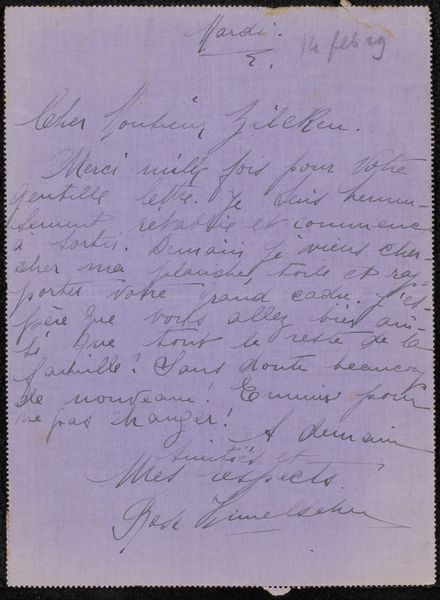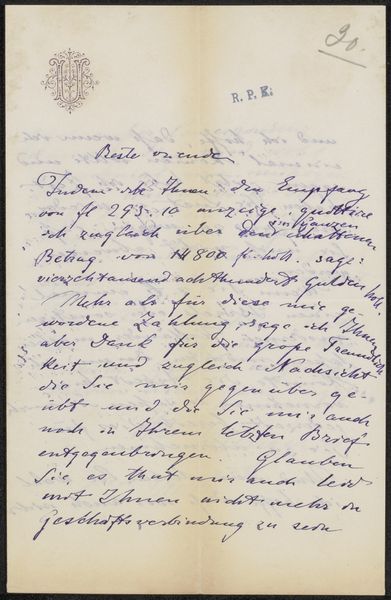
drawing, ink, pen
#
drawing
#
ink
#
pen
#
calligraphy
Copyright: Rijks Museum: Open Domain
Curator: Welcome. Today, we're examining a piece titled "Brief aan Andries Bonger," attributed to Emile Bernard, created before 1927. It’s rendered in pen and ink on paper. The initial impression I get is how raw and unstudied the composition appears, even though the artist’s letter contains elegant calligraphic nuances. It suggests intimacy and directness in the mark-making. Editor: Indeed. There's a clear sense of vulnerability communicated in the document through Bernard’s writing. Given the date, it is very telling of a post-impressionist dialogue on a shared avant-garde artistic experience between the writer, Bernard and the addressee, Bonger—which are both pivotal players of that historical period. How does the medium contribute to understanding such a social exchange? Curator: Well, the use of pen and ink, while simple, creates an undeniable immediacy. There's no room for correction, each stroke permanent and revealing of the hand's movement. The letter form itself becomes the artwork. Editor: But that’s where I depart from your argument of form—these types of documents represent some level of exchange about power dynamics that might shed a completely new light on this post-impressionistic friendship. Where do we place this object between a historical document that chronicles this kind of connection versus an artistic exchange through the action of calligraphic drawing? The answer might point to some sort of queer interpretation given how open ended those types of friendships were perceived at the time. Curator: I see your point about the historical-social layers embedded here. Though I can argue, on a pure visual plane, there’s something compelling about how Bernard’s handwriting constructs abstract shapes. Editor: I fully agree that those strokes are what makes it uniquely post-impressionistic through the context of queer temporalities. Overall, Bernard’s drawing carries complexities of a generation’s sociopolitical issues while embodying his distinctive graphic sensibilities. It goes beyond a simple composition and ink rendering. Curator: Yes, you've truly deepened my appreciation, seeing it not only as strokes, but as whispers of lives intersecting in art and time.
Comments
No comments
Be the first to comment and join the conversation on the ultimate creative platform.
